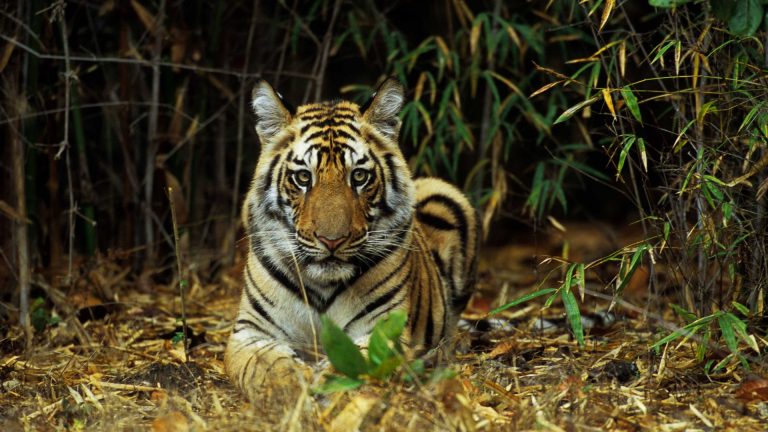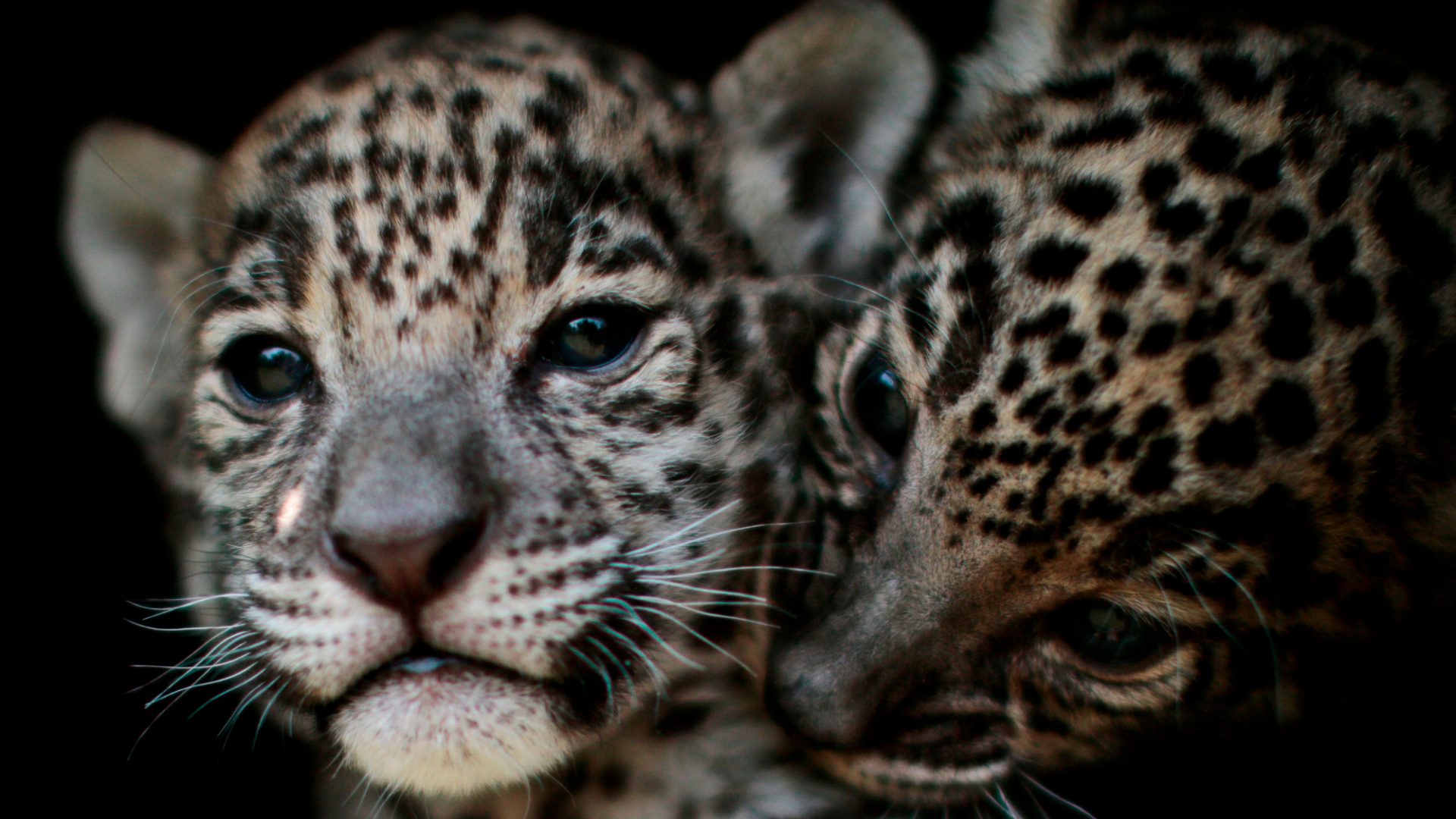“The Impenetrable” in northern Argentina is also known as the forest of spikes. As I walk through a sort-of path, I see a tree with spines like a rhino’s horns protruding from its trunk, its branches completely bare except for snowball-like buds. This white cotton appears like snow on the path, but the temperature is 45 °C the day I arrive – the first day of spring.
I’m here because, among these spikes and spines, jaguars used to roam. But thanks to hunting and deforestation, they became extinct. No jaguar had been spotted for 35 years. However, in August, a very exciting inhabitant was spotted here – a jaguar cub.
On the dusty banks of the River Bermejo, the largest of the two rivers that surround this forest, there’s a smell of honeysuckle and quince in the air. “It doesn’t have quince fruits but smells like them,” says my guide, Melina Ibáñez, pointing to a bush with yellow flowers.
Even in her khaki long sleeves and trousers, she looks cool despite the heat. “This is nothing,” she tells me, “the summer is unbearable. It reaches 55 °C.” From behind the tree, an armadillo runs straight at our feet, its back covered in white spiky hair.
Ibáñez was born and raised in the Impenetrable Forest and she has agreed to take us downriver to try to spot a jaguar. “The rivers are important because jaguars are great swimmers,” she explains. They roam along the water’s edge, trying to find food and mates, and can cover around 2.5km a day swimming. “But I’ve never seen one,” she says.
Ibáñez is 27 years old and, growing up, she knew that jaguars no longer existed here. “My brothers and I used to walk 7km a day to school, that’s how we learned about wildlife.” They would see other creatures – giant anteaters, wild pigs, tapirs, maned wolves.
“As its name suggests, it’s hard to live here,” she tells me. “It’s wild and difficult to enter or leave. I love it.”
We hop on a small motorboat – a piece of material strung overhead for shade – and meet Evaristo Santos Ortega. He comes from Argentina’s gaucho region outside Buenos Aires, and swapped horses for wild animals around two years ago.
Both Ibáñez and Santos Ortega now work for Rewilding Argentina, a non-profit foundation that is reintroducing jaguars into this area. The project has three aims: reintroduce the top predator, get the local people on board, and establish tourism to provide jobs.
We pass black eagles – always in pairs – perched on branches jutting out from the chocolatey, muddy water. Occasional caimans slide into the river, their sunbathing disturbed by our noise.
Santos Ortega explains that despite the two rivers, water is scarce inside the forest. “Everything has evolved to be used to drought, meaning the wood is really hard and durable, making it prized for construction and furniture.” And this is partly why jaguars became extinct. Their habitat was lost because this is one of the most deforested areas in the world.
“My father used to have a ranch of carob trees,” Ibáñez explains. “But it was left like that,” she says, pointing at one of the empty, sun-bleached banks. “I remember piles of logs higher than me.”
We arrive at the riverbank where we will camp for the night. I step out of the boat on to what I think is a jaguar’s footprint. “It’s a tapir’s hoof,” says Santos Ortega, smiling at my excitement. “Lots of them live in the forest.”
Ibáñez takes me on a footprint tour as the sky turns pink. There are marks from small forest cats, wild boars, and slithers from caiman tails. We find no traces of jaguars though, which makes me feel a little less terrified about camping here.
I need the loo in the middle of the night and see a glint in the bushes – luckily there’s only one, so I assume it’s a firefly. I thought I was hardy, but this forest’s mosquitoes, syrupy thick air and rustling foliage mean I don’t sleep. I wonder how locals must feel knowing that jaguars are now roaming around their homes.
In the morning, I spot larger cat footprints on my way into the bushes. Santos Ortega is casual when I call him over. “Oh, they’re from a puma!” he says. Perhaps it wasn’t a firefly, then.
As we clamber on to our boat and Santos Ortega radios his colleagues, I ask if he can find out where any of the jaguars are, just to up our chances of seeing one. But he explains that they’re open radio waves and could be intercepted by hunters.
Suggested Reading

Living among the tigers
Hunting remains a problem here, as skins still mean money. A few days ago, they saw a boat full of men pretending to fish. Their huge guns suggested otherwise.
“This is the poorest province in Argentina,” he continues. Local children hunt lizards and sell their skins to buy schoolbooks. “People have to make a living from what they have, and that’s the forest.”
The aim is to give people jobs in tourism instead, so that they’re incentivised to protect the wildlife in order to attract tourists to see it. People like Ibáñez can now be guides, and her parents open their home to provide meals to tourists. She still sometimes argues with her father, though, trying to persuade him not to cut down a tree for some quick cash.
We arrive at our next stop: the scientific station. In a tent with nine screens on one wall, I meet the self-styled “jaguar girls”. Débora Abregu and Agustina Donini are the biologists leading the reintroduction of jaguars. “We have great fun watching the love-lives of the jaguars on these screens,” Donini says with a laugh.
The project started in 2019 when a lone male jaguar was spotted swimming down the Bermejo. Locals named him Qaramtá, which means “the one who cannot be destroyed” in the indigenous language. “He was looking for a mate,” Abregu explains.
In another project further south, Rewilding Argentina had rescued a female jaguar called Tanya from a zoo. They transported her to the Impenetrable National Park and made a large enclosure in the jungle, with a private oxbow lake.
When she was in heat, they set up tricks to coax Qaramtá into Tanya’s home. “She accepted him, and three months later their twins were born. It was incredible,” Abregu says.
The “jaguar girls” helped Tanya to bring up her cubs without any human contact. “Most of my day is spent tricking the jaguars,” Donini says, “so that they don’t think humans are a food delivery service.”
Two other wild males arrived, swimming down the river: Tamibuk in 2022, followed by Tebuk in 2024. The scientists think they swam from the Bolivian cloud forests several hundred miles away. When the females are in heat, their roars change to a higher-pitched, panting sound, and it’s believed this is how males know where they are.
One of the twins was a female cub called Nala. Once they’d assessed her hunting skills last year and agreed that she was ready to live fully in the wild, she was released.
Nala and many of her fellow jaguars wear collars so that they can be tracked through hidden cameras. With a stroke of luck, the scientists caught her and Tebuk mating last October. They are the parents of the cub spotted in August: the first jaguar to be born in the wild here for more than three decades.
“Nala and her cub have brought so much hope,” says Donini. “I used to feel despair. Like there is nothing to be done for the world, everything is broken. But now I like to see the glass half full.”
Donini takes me to one of the enclosures housing a jaguar that can never be released. Porá slopes down a tree to find the donkey meat left for him. Even though he is walking at a glacial pace (it’s too hot, even for him), I can hear dust crunching under the weight of his paws.
Porá lives here so that Rewilding can show local people the animals being reintroduced. “It’s easier to realise how beautiful they are and deserving to be protected when you see them in the flesh,” Donini says.
It’s rare to interview someone while watching a jaguar munch its dinner. It’s even more rare to be interrupted by roaring in the distance.
I ask whether the jaguars could now survive without Rewilding’s intervention. Donini says they still need to help different jaguar populations to find each other in order to breed. “Otherwise, there is a gene-pool problem,” she says. Their habitats have been destroyed so there is no other way for them to meet.
On the way back to the car I see some fresh, huge footprints. “Yes, that’s Qaramtá,” Donini confirms. He likes to prowl at sunset. “He’s been really close to us.” She points out a tree with deep claw marks scratched into its bark.
Rewilding continues to be hopeful about its jaguar breeding programme. Another female, Açaí, was also set for release into the wild, and the team have seen Nala and Tebuk mating again.
Once I’m back in Buenos Aires, I receive a voice note from Ibáñez. In between her giggles and the wind, I can just hear her repeating “I saw a jaguar swimming across the river!”
It’s her first sighting in the wild of the forest’s top predator. “I grew up knowing they weren’t in my home, but what luxury… what luck… they’re here now.”
Charlotte Pritchard is a freelance journalist living in Buenos Aires. Rewilding Argentina: www.rewildingargentina.org/eng/



